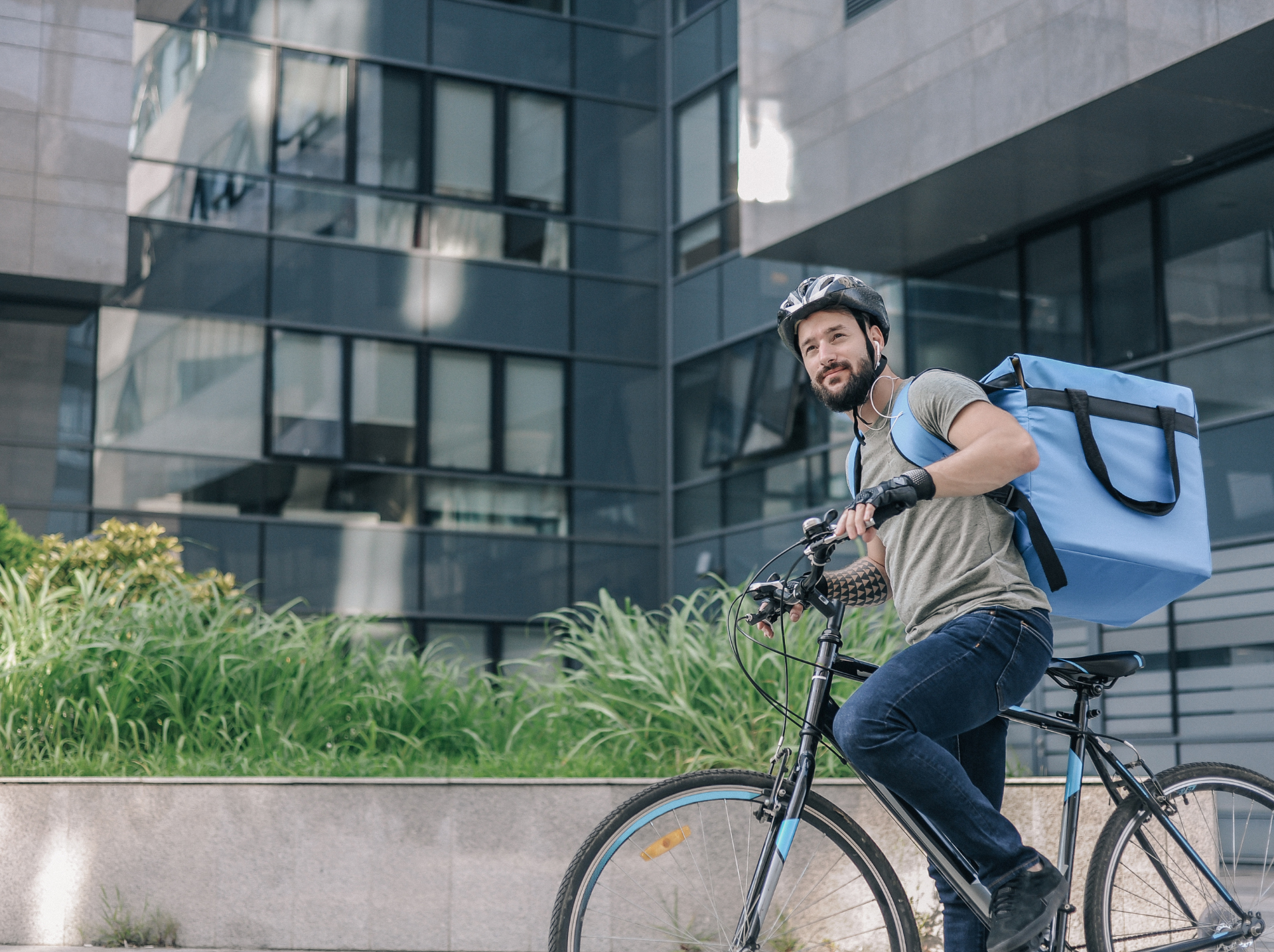The Quick Commerce Boom: Redefining Consumer Expectations

Every minute counts in our fast-paced world. Consumers today have little patience for slow delivery times and complicated shopping processes. They demand faster and more efficient service than ever before.
Quick Commerce, or Q-commerce, offers a new solution. This delivery model promises to transform retail by delivering goods within minutes. It reshapes how we shop and how businesses operate. Quick commerce gives us a glimpse into the future of consumer behaviour and competitive business practices.
The Role of Technology in Quick Commerce
Quick commerce has grown rapidly in recent years. It started with food delivery and now includes groceries, pharmaceuticals, and other consumer goods. The demand for ultra-fast deliveries is high, driven by tech advances and changes in consumer behaviour.
More people using smartphones and fast internet has made it easier to order products quickly, boosting the growth of quick commerce.
Technology plays a big role here. Mobile apps, real-time tracking, and AI-driven logistics let companies offer rapid deliveries, sometimes in 10-15 minutes. These technologies make ordering and delivery smoother and keep customers happy by updating them in real-time.
Impact of the COVID-19 Pandemic
The COVID-19 pandemic also accelerated the adoption of quick commerce. People looked for safer and more convenient shopping options. The pandemic highlighted the need for contactless delivery, which quick commerce meets well.
The desire for immediate results also drives the fast growth of e-commerce. Modern consumers, especially in cities, value their time a lot. They prefer shopping options that fit easily into their busy schedules.
This need for quick and convenient service is a lasting change in consumers' expectations. As a result, more businesses are using quick commerce models to stay competitive and meet their customers' changing needs.
The Rising Demand for Fast Delivery
Today's consumers are busy. They see time as a precious asset. This has increased the demand for quick and convenient shopping experiences. Many consumers will pay extra for fast delivery services. For example, a study found that 41% of consumers[1] will pay for same-day delivery, and 24% are willing[2] to pay more for delivery within an hour or two.
Changing Consumer Expectations
Having items delivered almost instantly has changed what consumers expect. Now, speed is a must-have, not just a nice-to-have. This change is evident in cities where enough people live close enough to make fast delivery work.
The expectation for quick delivery now includes food, groceries, and products like electronics and clothes. Also, tracking orders in real-time is now expected. Consumers want to know each step of their delivery.
This openness helps make shopping a better experience and builds customer trust and loyalty. So, companies invest in advanced tracking systems to meet these expectations and stand out in a crowded market.
Navigating the Competitive Waters of Quick Commerce
The evolution of e-commerce has been very competitive, and many companies are trying to lead. Companies like Glovo, Rappi, Gorillas, and GoPuff are at the forefront. They use advanced technology and detailed logistics to meet high customer expectations.
The market is constantly evolving, with ongoing innovation and bulletproof aimed at improving delivery speed and efficiency.
The Adaptation of Traditional Retailers
Traditional retailers are also joining such new consumer trends. Big names like Walmart and Amazon have added fast delivery options to compete. Amazon's Prime Now, for example, offers two-hour delivery on many items, setting a high bar.
Walmart works with companies like Instacart and Postmates to fit into the quick commerce model.
Opportunities for Smaller Businesses
Smaller businesses and startups also get into quick commerce, focusing on niche markets or specific areas. They provide specialised services that meet local needs. Their flexibility and local knowledge let them compete effectively with bigger companies.
As competition increases, companies seek mergers and acquisitions to strengthen their positions and expand their reach.
5 Essential Strategies for Thriving in Quick Commerce
To succeed in the e-commerce evolution, businesses need several strategies:
1. Embrace Technology
Use mobile apps, AI, and better logistics to improve delivery. Real-time tracking and smart route planning can speed up deliveries. Mobile apps make ordering easy, and AI can predict when and what people will order.
2. Optimise Inventory Management
Keeping track of inventory in real-time is key. Using data to predict what customers want helps reduce waste and keeps popular items in stock. Modern inventory systems monitor stock levels continuously, assisting businesses to adjust to changing demand quickly.
3. Partner with Local Services
Working with local delivery services can widen your reach and speed up deliveries. Local partners offer valuable insights and resources, especially in new areas. These partnerships can also cut costs and improve quality using local know-how and infrastructure.
4. Focus on Customer Experience
Make platforms user-friendly and personalise the customer experience to keep them coming back. Simplifying the ordering process and offering custom recommendations can build loyalty. Investing in smooth, intuitive app and website interfaces and using customer data for personalised deals and suggestions can make a big difference.
5. Sustainable Practices
Meeting the increasing demand for eco-friendly options is crucial. Using sustainable packaging, optimising delivery routes to cut emissions, and adopting green practices throughout the supply chain attract eco-conscious customers, save money, and improve operations in the long run.
Challenges and Future Projections
Despite its growth, Quick Commerce faces challenges like high operational costs and maintaining profitability. Making sure products, especially perishables, arrive in good condition is costly. Also, the long-term economic viability of this model is still being debated. Experts believe companies might need to rethink their pricing strategies for long-term success.
High operational costs come from the need for an extensive logistics network, fast delivery setups, and advanced tech. Maintaining a fleet, employing many delivery staff, and investing in tech for efficient planning and tracking all add up. Making sure products arrive in perfect condition also adds to the expense.
What the Future Holds
Looking forward, the quick commerce market is expected to keep growing. It might reach $35 billion by 2026[3], growing at over 47% a year. As tech improves and people continue to value speed and convenience, quick commerce will likely become a regular part of retail. Companies that innovate and adjust will likely do well in this evolving market.
Wrapping Up
The rise of quick commerce shows how consumer expectations are changing. Speed and convenience are now essential. Businesses must adapt by using new technologies, optimising operations, and focusing on the customer experience.
While there are challenges, this sector's growth potential is huge. It promises a future where fast delivery is standard. By understanding and adapting to these consumer trends, companies can position themselves for success in this dynamic market.
Are you ready to accelerate your business in this fast-evolving market? Join GrowthJockey today and unlock the tools and insights you need to thrive in the evolution of e-commerce. Don't just keep up—lead the way.
FAQs
1. What distinguishes quick commerce from traditional e-commerce?
Quick commerce delivers products extremely fast, often within minutes. This is much quicker than traditional e-commerce, which usually takes at least a day for deliveries. Quick commerce uses local storage facilities close to customers, enabling faster delivery. Traditional e-commerce might use larger, centralised warehouses farther away, which can delay delivery times.
2. How do quick commerce companies handle peak times and high demand?
During busy times, such as holidays or special sales, quick commerce companies use advanced technology to forecast how many orders they will get. They make sure they have enough items in stock and enough delivery staff scheduled.
They also use software to find the best delivery routes. This helps them manage many orders quickly and efficiently, ensuring fast delivery doesn't slow down even when they are swamped.
3. Can quick commerce be sustainable, considering its rapid delivery model?
Yes, quick commerce can be environmentally friendly. Companies are using electric vehicles to reduce pollution. They plan delivery routes that are the most efficient, which helps save fuel and reduce carbon emissions. They also use packaging made from recycled materials or designed to be reused. These steps help make quick commerce more sustainable.
4. What role do consumer data play in quick commerce?
Consumer data is crucial in quick commerce. It helps companies understand what customers want to buy and when. This information allows them to keep the right products available and avoid running out of stock.
Data also helps companies customise their websites and apps. This makes shopping easier and more pleasant for customers. Additionally, data helps plan marketing strategies that are more likely to attract customers by targeting their specific interests.
5. Are there any privacy concerns with the data-intensive nature of quick commerce?
Collecting and using large amounts of customer data does raise privacy concerns. Quick commerce companies need to be very careful. They must follow strict data protection laws, like the GDPR in Europe. These laws help protect personal information.
Companies must ensure they use data responsibly, protect it from unauthorised access, and be transparent with customers about how their data is used. Customers who feel their data is safe are more likely to trust and continue shopping with a company.








